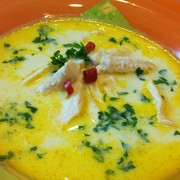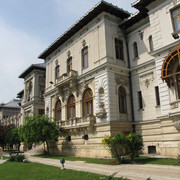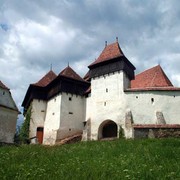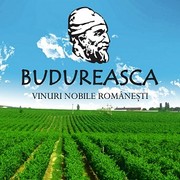The caves
Beautiful crystals and stalactites spectacular forms are the backdrop to the path that winds for about 1,300 meters underground from the Cave of Bàsura ("witch" in the Ligurian dialect) to the lower Cave of Saint Lucia: a journey on the trail of prehistoric cave bears and men.
A tunnel 110 meters long connects the Cave of Bàsura, the most spectacular of all and the lower Grotta of Lower, rich with salt crystals, stalagmites and stalactites very suggestive as the Hall of the Pantheon, the Hall of Alabaster, the Hall of the Capitals. There found refuge for thousands of years the cave bears, there have been discovered remains of bones, paw prints and scratches on the walls, as well as footprints, hands and knees imprinted in the clay by prehistoric man dating back to about 12,000-12,500 years ago .
[Credit Rinina25 Twice25]
You pass the stalagmite called Tower of Pisa and it is easy to understand why, you cross the Living Room of the Witch, the Hall of the beam and the corridor of footprints to reach an underground lake populated by blind shellfish. After casting alabaster pipe called the organ, you visit the Cemetery of the bears and the Hall of Mysteries.
You will think that really the time machine brought you back to the Stone Age!
The Ethnographic Museum of Varatella
Opened in 1997 at the historic Palazzo D'Aste Del Carretto, exhibits a rich collection of objects and materials donated by local people, divided into eighteen sections, covering agricultural activities, in particular the cultivation of olives, craft, aspects of domestic life, customs and popular devotion. Since 2008 are open to the public five rooms of the palace D'Aste Del Carretto where furnishings are visible from the seventeenth, eighteenth and nineteenth century.

Monuments and places of interest
The typical medieval village is still preserved, there are some towers and the bridge with three arches of called "Giaire" (or Gravel), on the stream Barescione, dating from the thirteenth century and three round arches with squared stone pillars, as well as some parts of the ancient defensive walls.
Palazzo (Paraxo) of the bishops of Albenga in the historic center of Toirano. Summer residence of the representatives of the clergy Albenga, it is preceded by a loggia dating back to the fifteenth century and supported by columns. In the palace was born Baccio Emanuele Maineri, nineteenth-century novelist of essays and historical writings.
Palazzo D'Aste in Toirano's historic center with loggia of the fourteenth century.
Palazzo D'Aste-Del Carretto also in the historic center, dated to the sixteenth century, where instead of the old stables, is located the Ethnographic museum of the val Varatella.

Gunbi Festival
One of the most awaited summer events is held every year in Toirano: the Gunbi Festival. It is not only a country fair complete with music and good food.
Nowadays the Gunbi Festival truly represents the epitome of the summer in Liguria and a place where everyone gets to meet and have fun.
Organized by the “Gunbi Festival Committee” Association under the patronage of the Municipality of Toirano, the festival is usually held during the first week of August: during four days, starting in the early afternoon, you are invited to the market fair, showing agricultural products as well as arts and crafts, and to the Oil Mill Festival (also known as Gunbi or Gumbi Festival).
Then cellars are open for dinner: the small and winding lanes of Toirano’s historical center become alive and fill with people ready to taste, while walking up and down the lanes, the innumerable local specialties such as stuffed bruschetta, farinata, panizza, the “michettin” or fried bread, “sbirulini”, grissini covered with bacon, battered vegetables, Pigato-wine marinated peaches, or succulent stuffed cream puffs among other specialties.

[Credit Alessio Sbarbaro]
Within the hamlet, to make the party more typical and merry, stands are scattered around, selling crafts made of wood, bijoux, clothes, natural products and much more. It is not uncommon to see artists either playing music or dancing and entertaining the passersby.
Besides appetizers that you can taste while walking and viewing the stands, there are also three open-air restaurants, where you can sit in the company of friends and family to enjoy a typical Ligurian meal: at The Marquis' Kitchen, in the namesake park, you can find various meat- or snail-based dishes; at the Giaire’s Kitchen, in the southern part of the hamlet, everything is cooked with fish; and you cannot do without the typical vegetarian cuisine at the Braia in the schools near the Municipal Building.
Dinner of the Marquis
For many years, on the second half of July, the renowned "Dinner of the Marquis' Park is held in Toirano.
Many Ligurian traditional dishes are featured such as antipasti, trenette al pesto, “mandilli de sea” (fresh pasta "handkerchiefs" prepared on the spot), fish ravioli with zucchini and shrimp sauce, a broth from mussels, clams and small cuttlefish, Ligurian-style rabbit, Mediterranean flavor snails, tripe, Toirano-style “cima” (a particularly prepared vegetable-mixed meat) with green sauce, fried fish and many other specialties.
Music and games for both adults and kids (bottle cap's game, Saint Patrick’s well, Wheel game and many others) are waiting for you with Toirano’s splendid historical center as a background.
For more information, like guided visist, hotels, restaurants, and more visit:http://www.toiranogrotte.it/en/home









